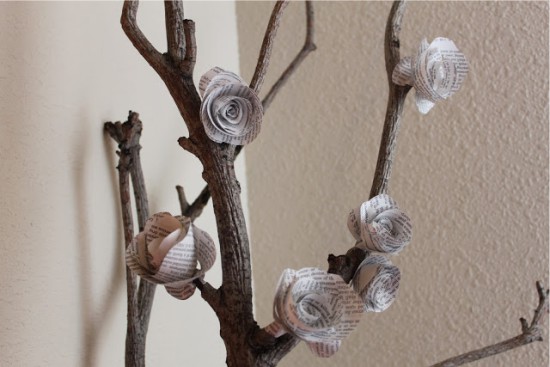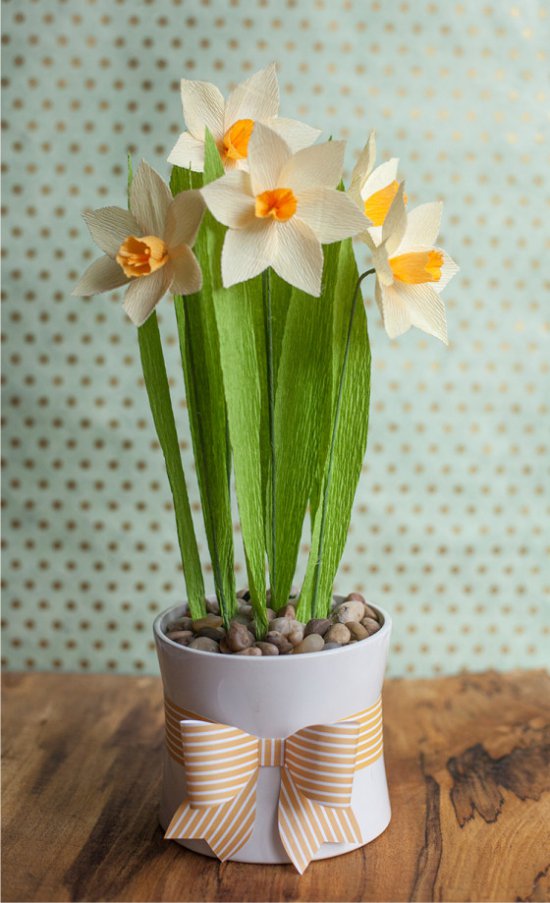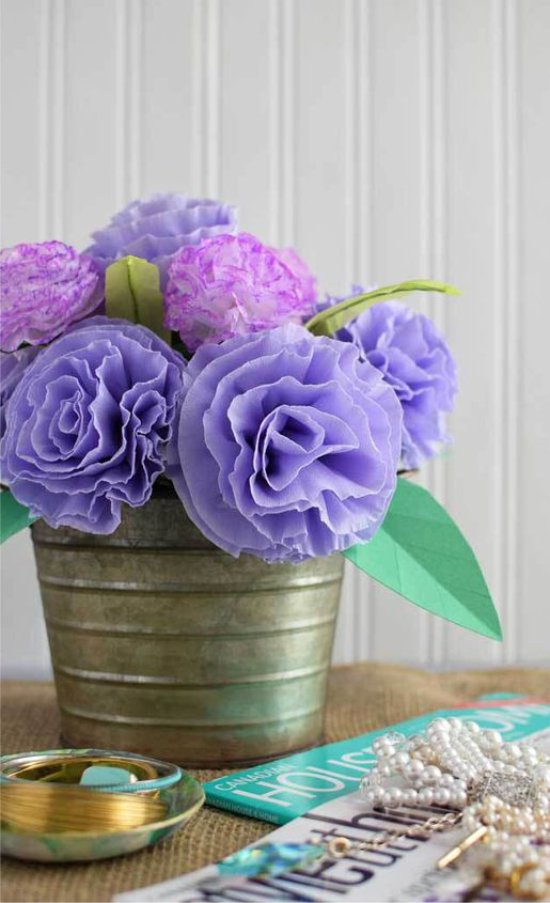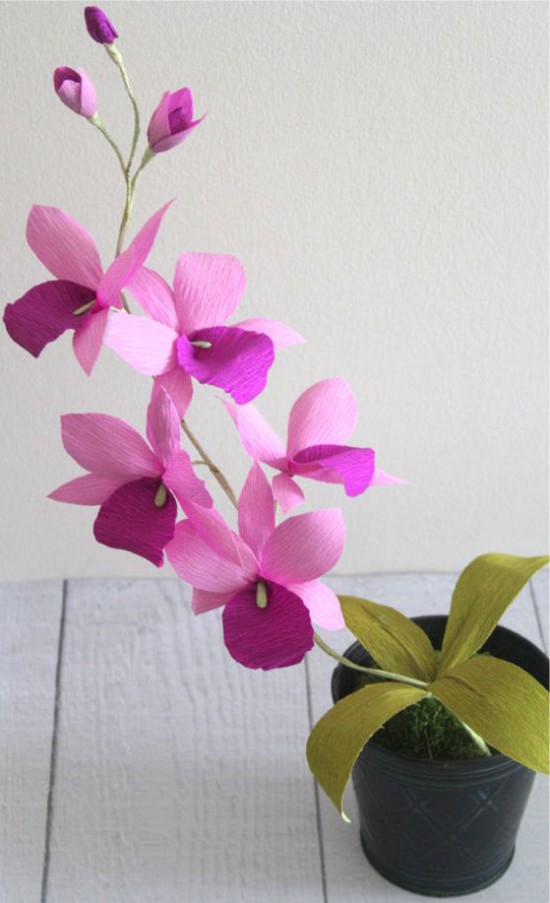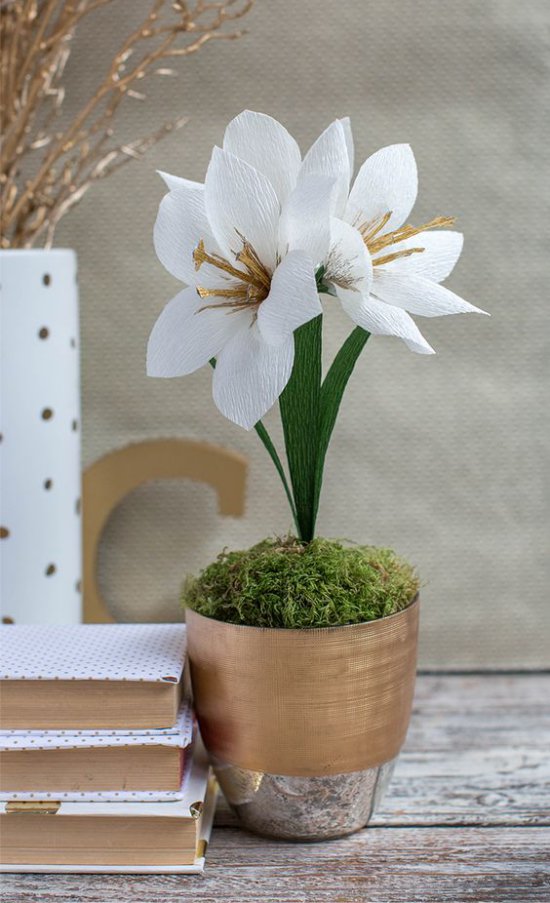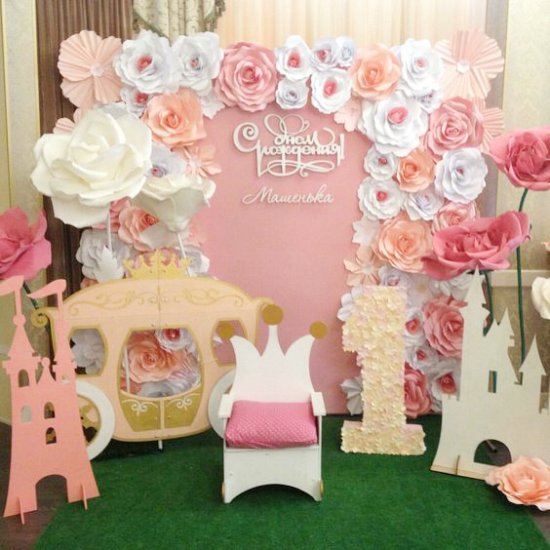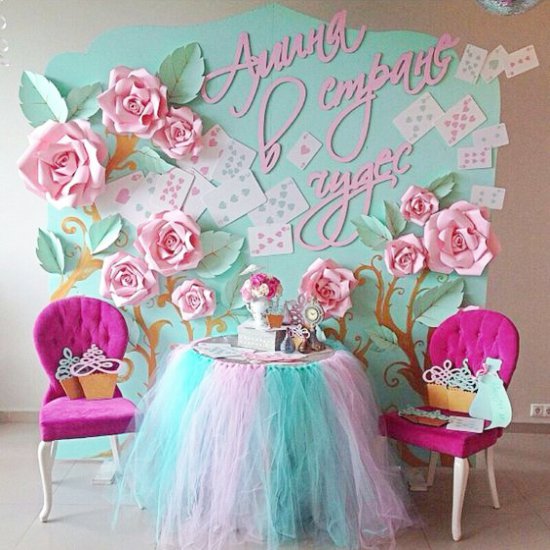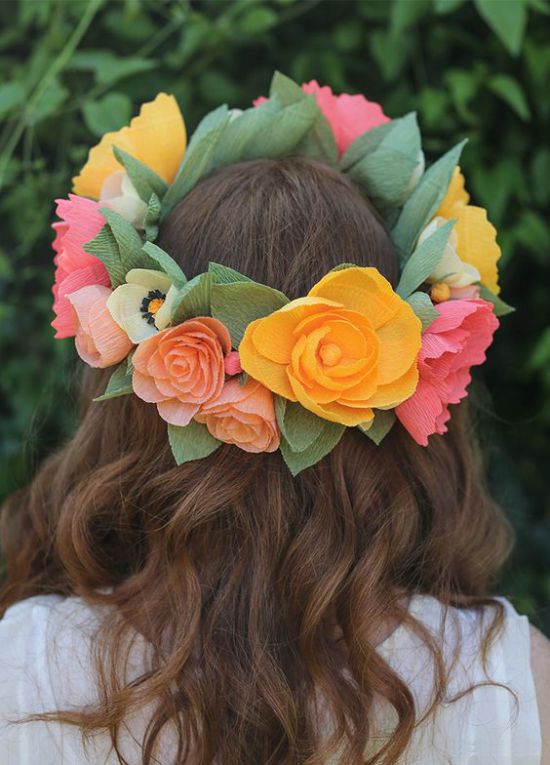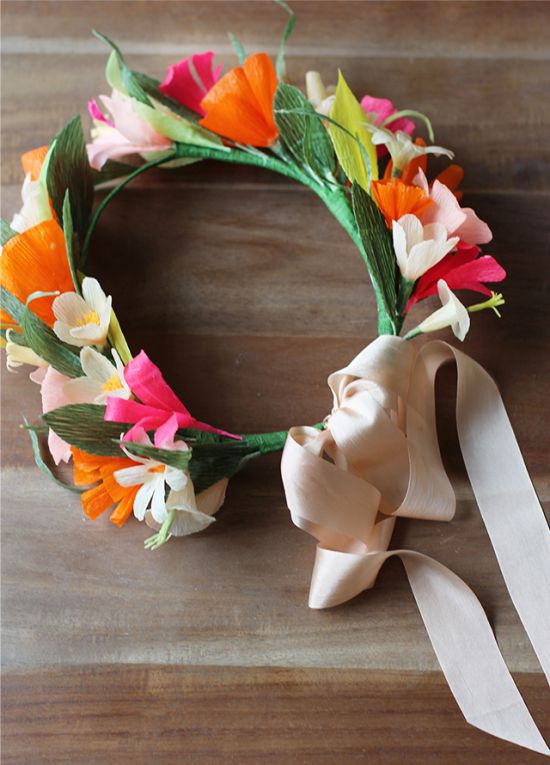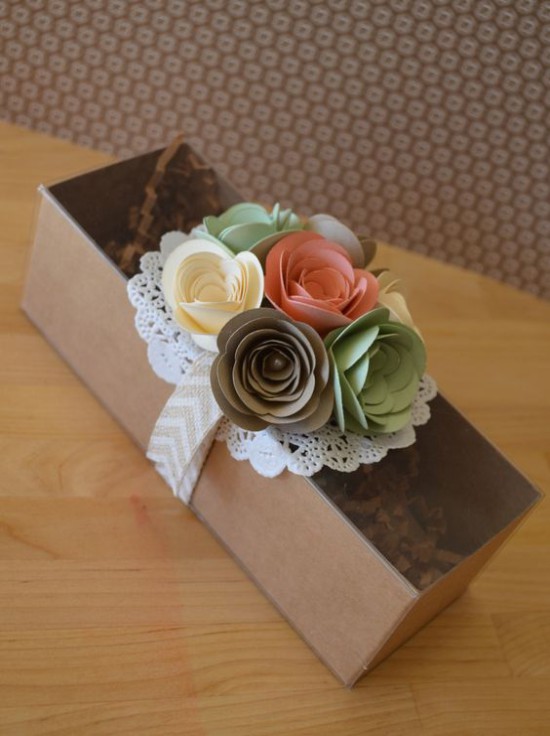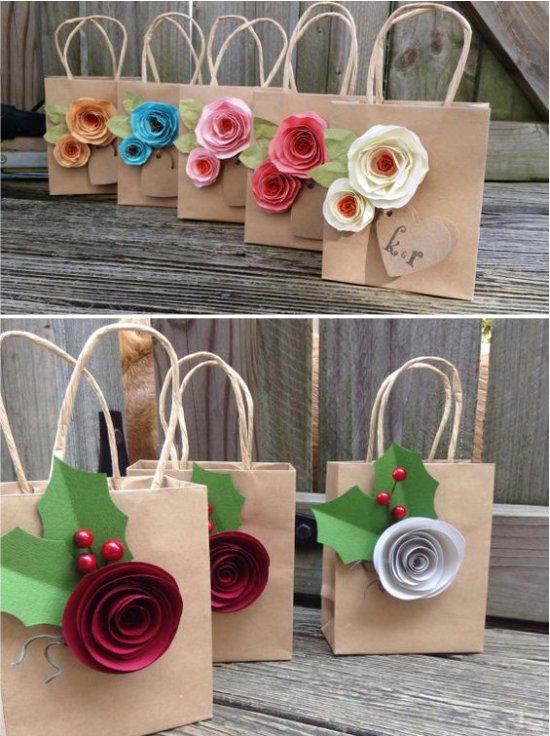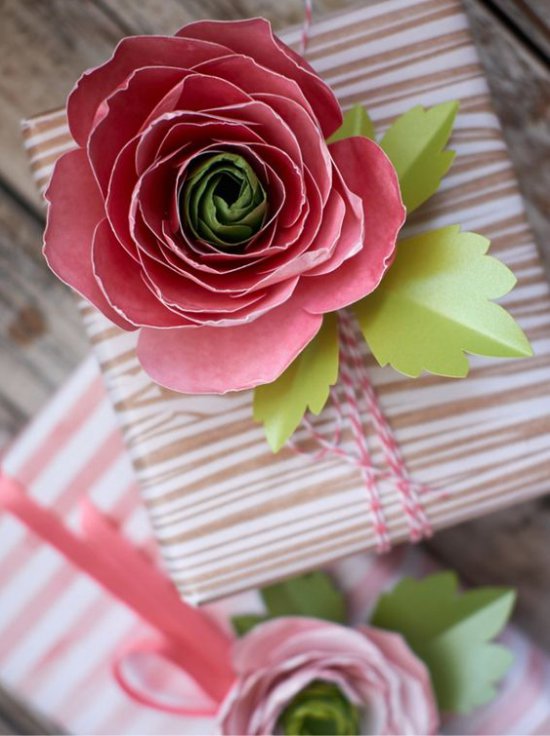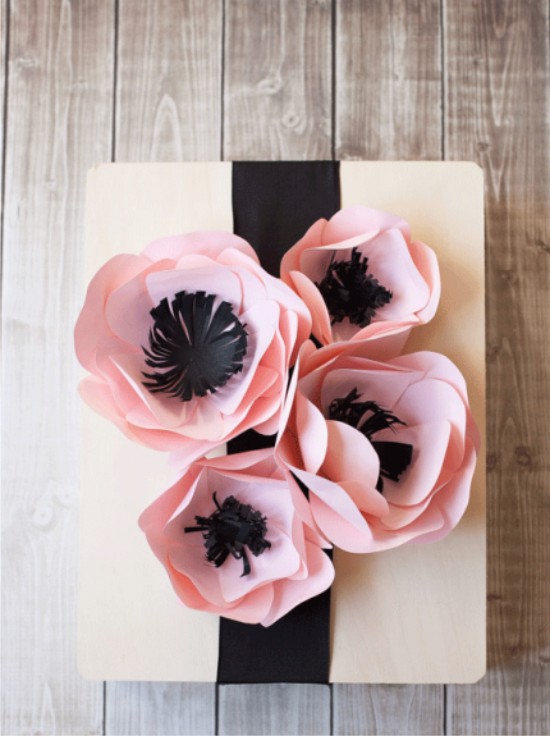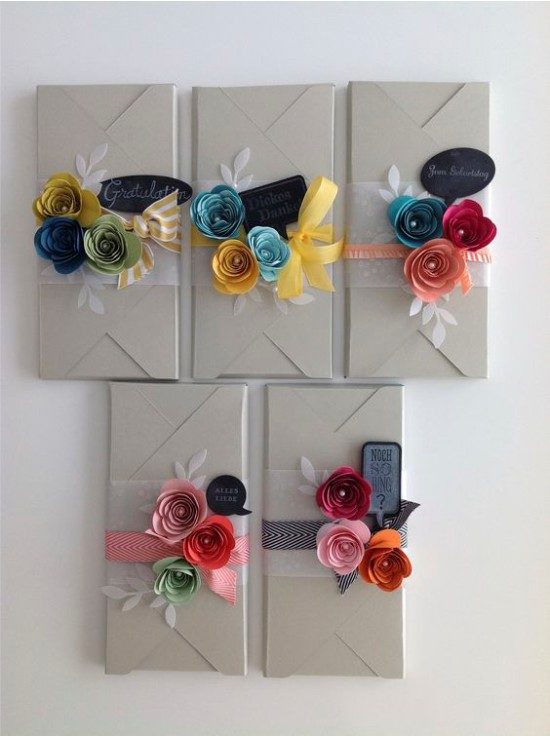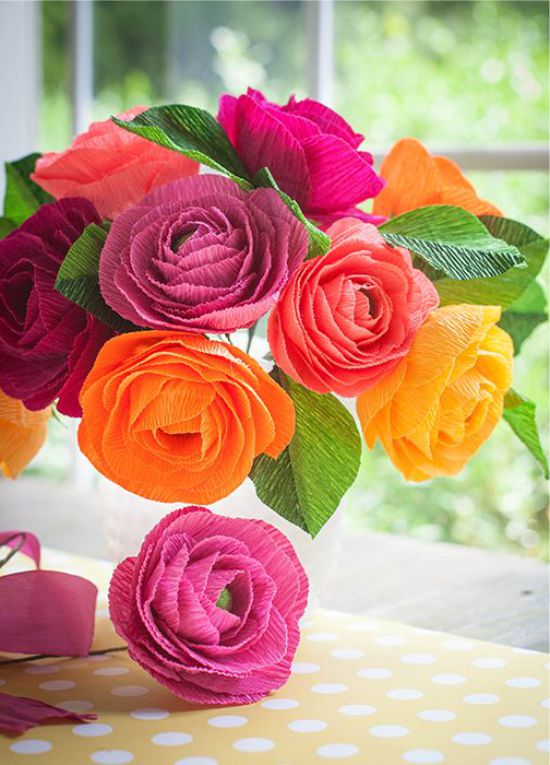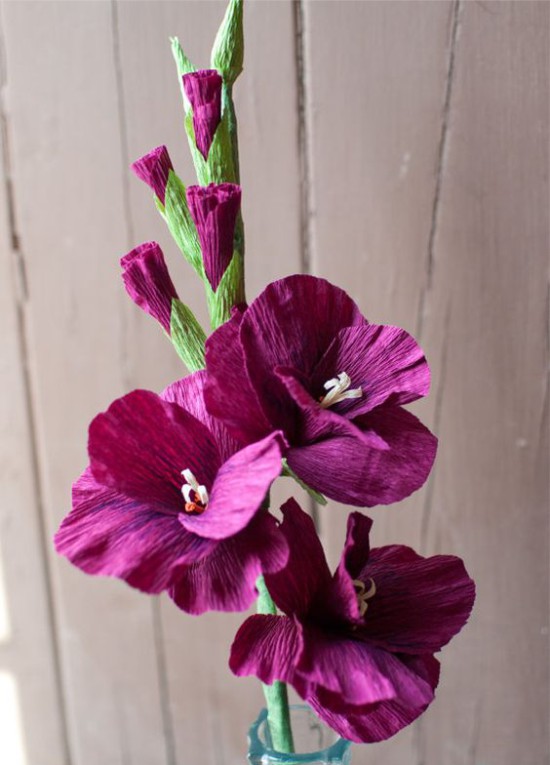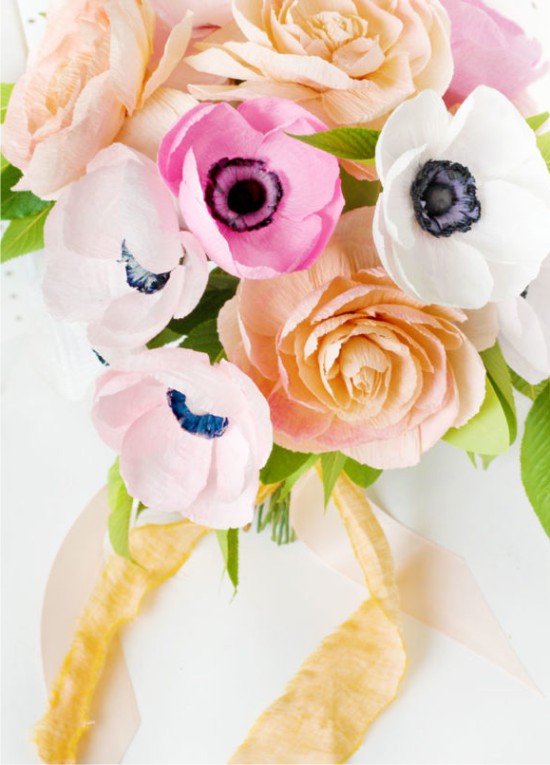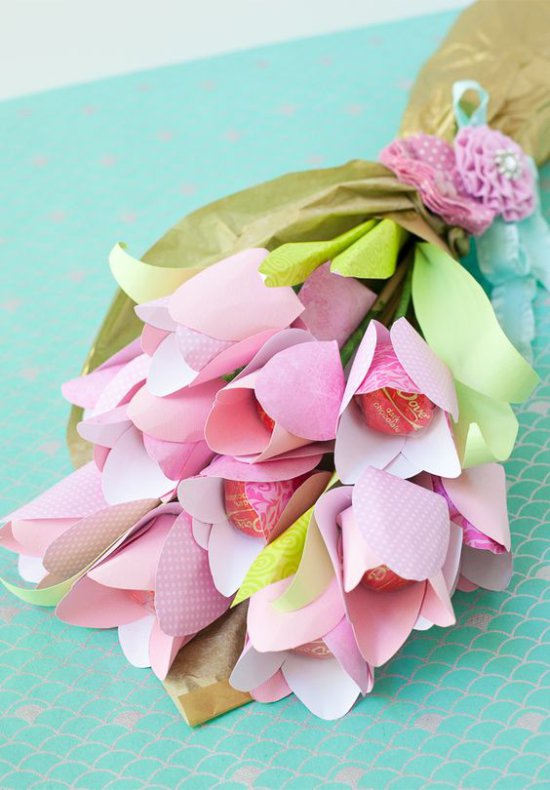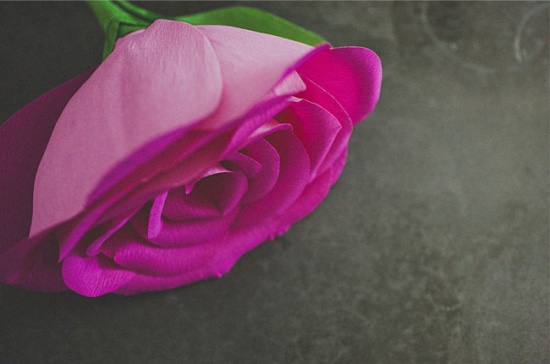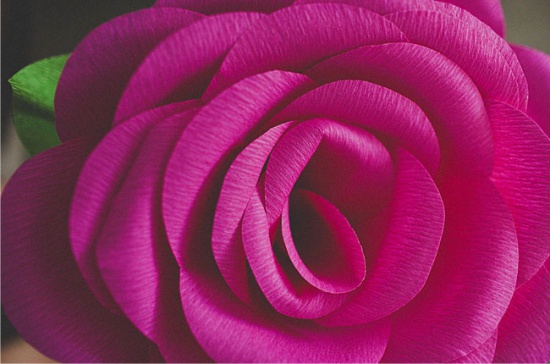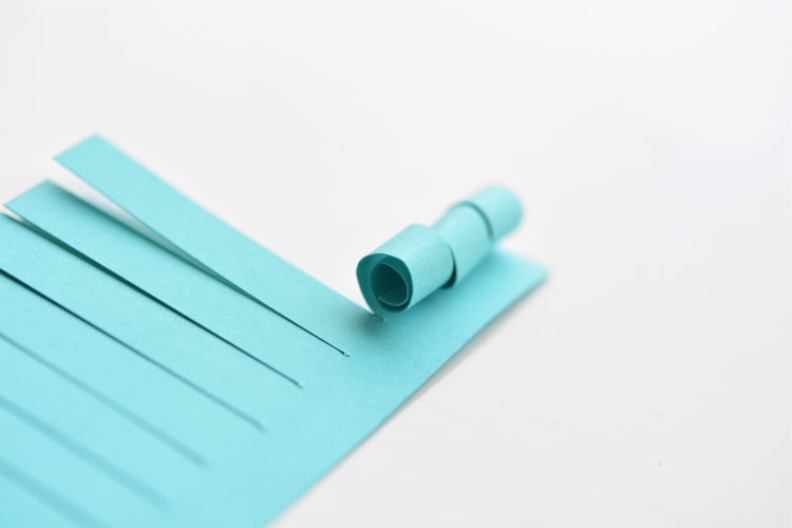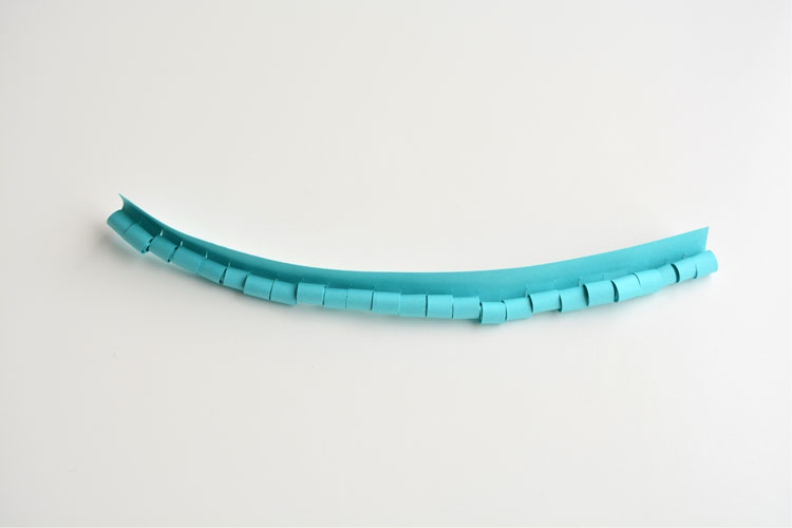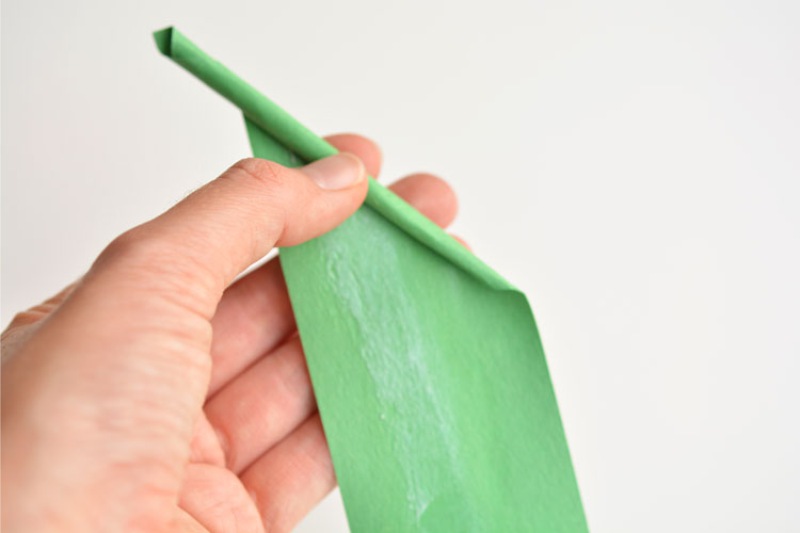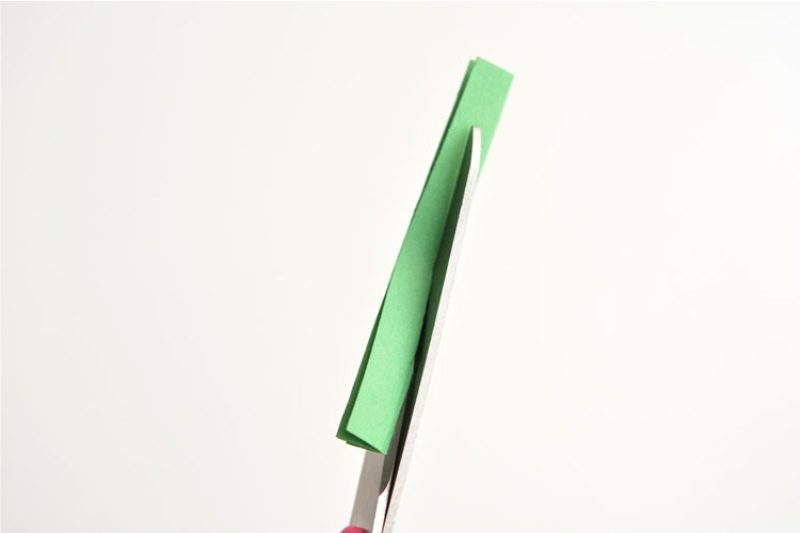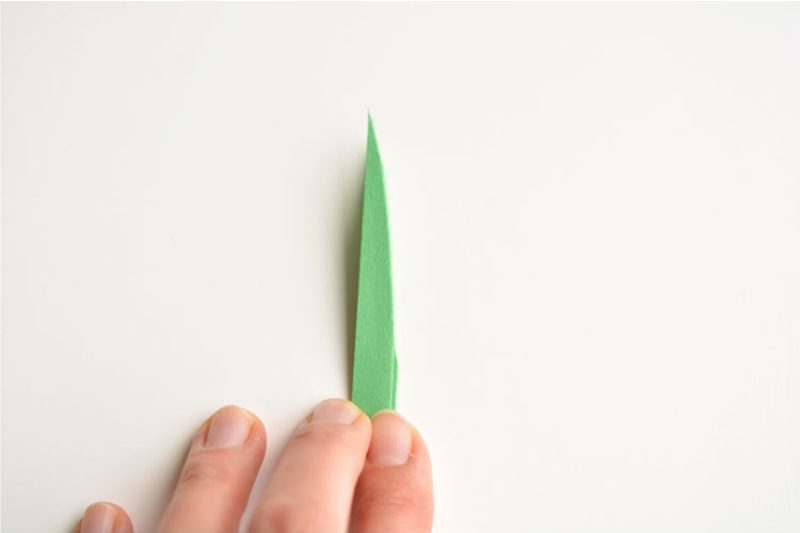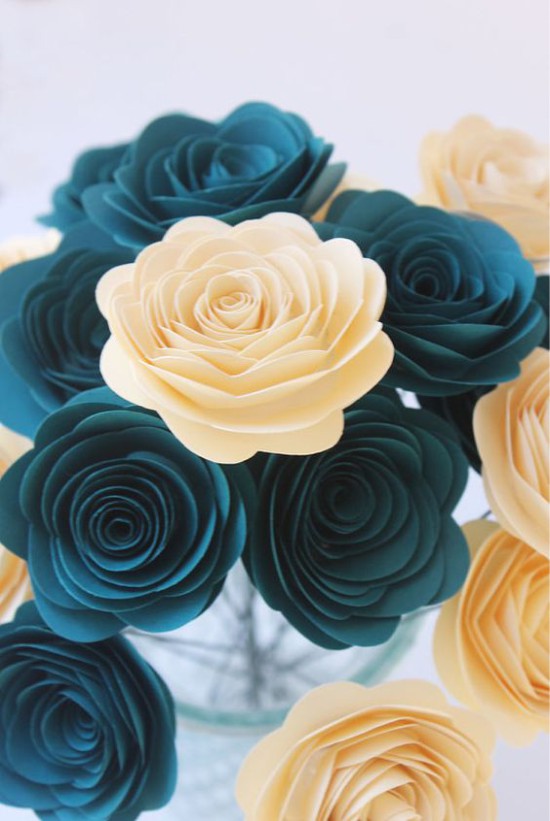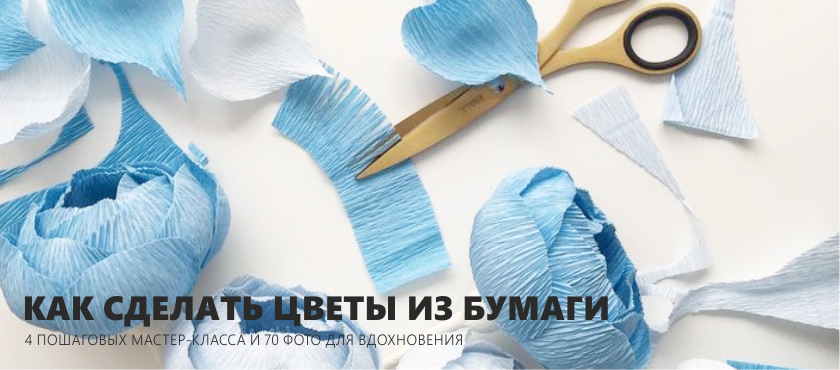
Flowers from paper are pleasant not only to see, but also to do by their own hands. In addition, they have a couple of advantages over their natural counterparts – they are much more affordable and durable. By the way, having learned to make flowers yourself, you will never lose your head, if you suddenly need:
- Pack gifts;
- Decorate the house for the holiday;
- Festively place the table setting;
- Make props for a photo shoot;
- Make gifts for relatives, friends, colleagues or teachers / educators of the child;
- … or just update the interior.
From this material you will learn how to make flowers with your own hands from corrugated, colored or tissue paper (silence). You are waiting for 4 step-by-step master classes with pictures and templates, as well as a selection of 70 beautiful photos and useful videos.
Ideas of application
Later we will tell you about the techniques of making flowers from paper, but first we suggest to be inspired by photo-examples of their application.
- Bouquets of paper flowers can not only be put in vases, but also “planted” in cute flower pots. To do this, they must first be inserted into the base of foam or floristic foam. Then the foundation should be zadekorirovat dry moss or small stones.
- Flowers from paper in vases, pots or just buds without stems decorate table for the birthday, March 8, Easter, Valentine’s Day or wedding.
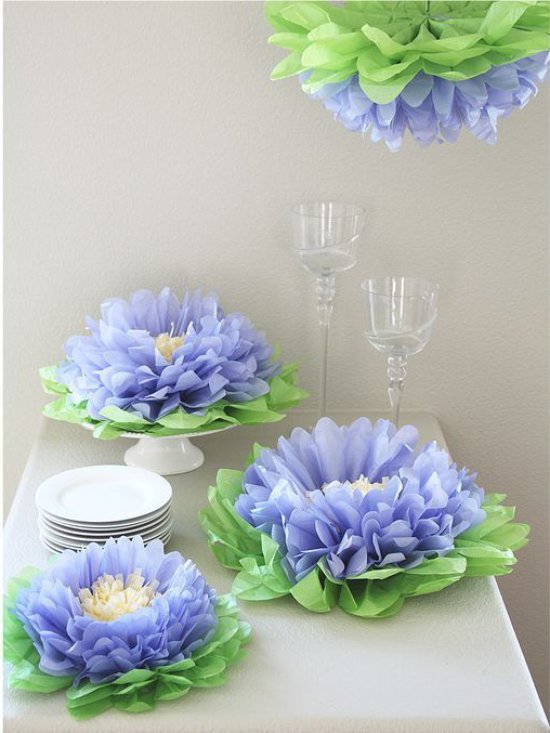
Flowers made of paper silently


- How to make napkins for a festive table setting? Just put the little flowers on top or fold them in rings with bright buds.
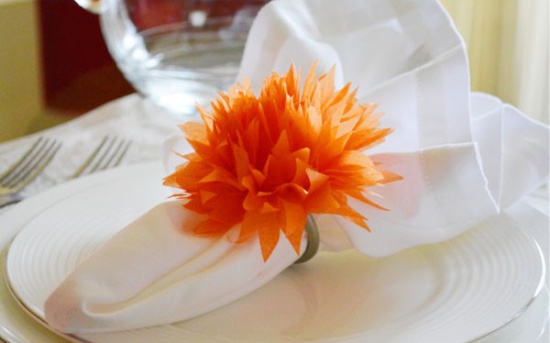
Ring for napkins with a flower made of paper with mildew
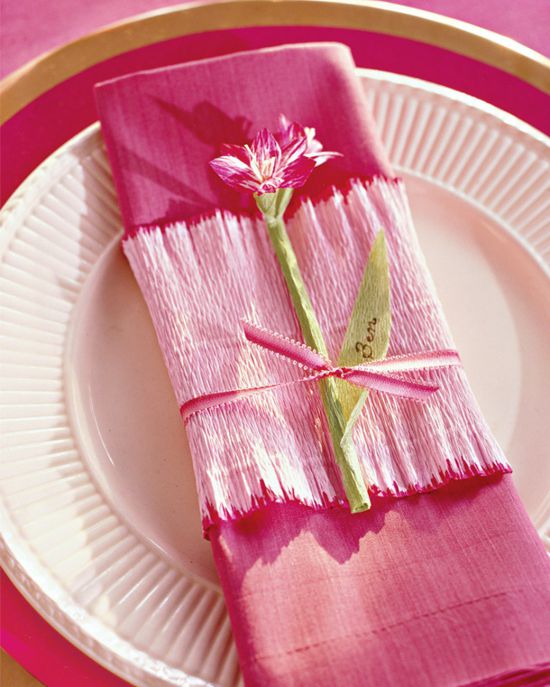
- And here is another attribute for the festive decoration of the table – holders for guest cards.
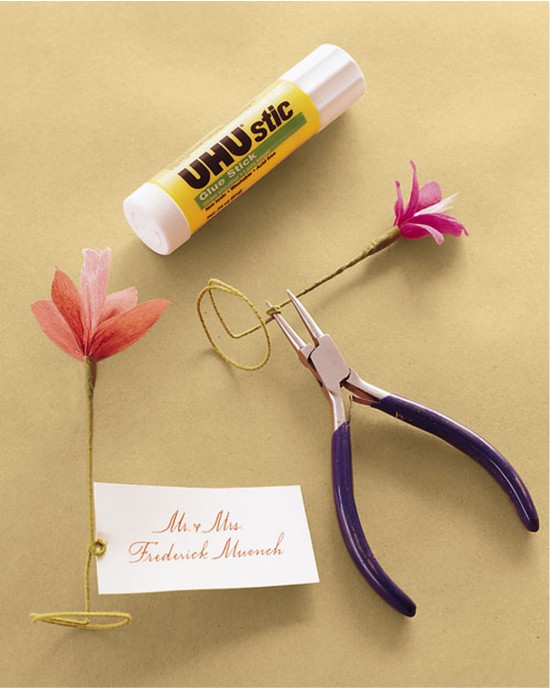
- Decorate the house for the holiday or just so you can here such garlands or cascades of flowers.
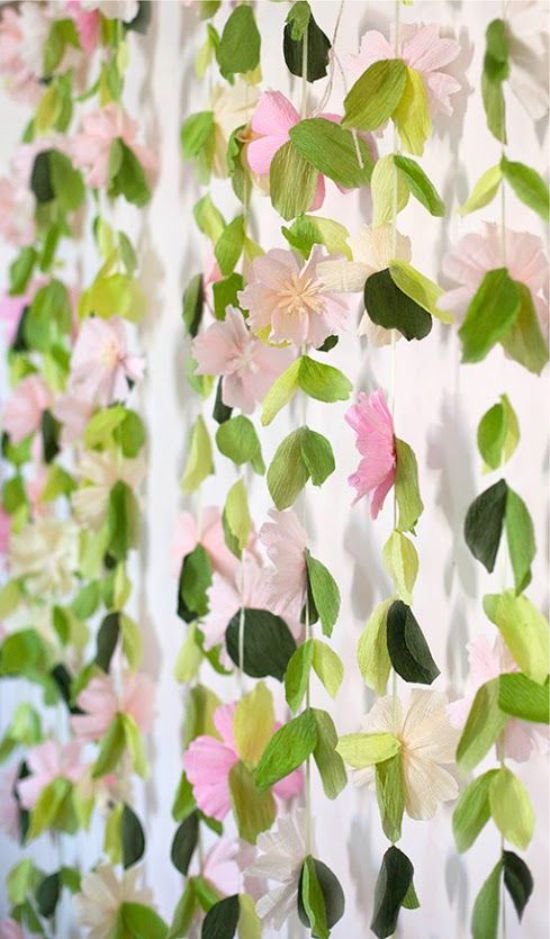
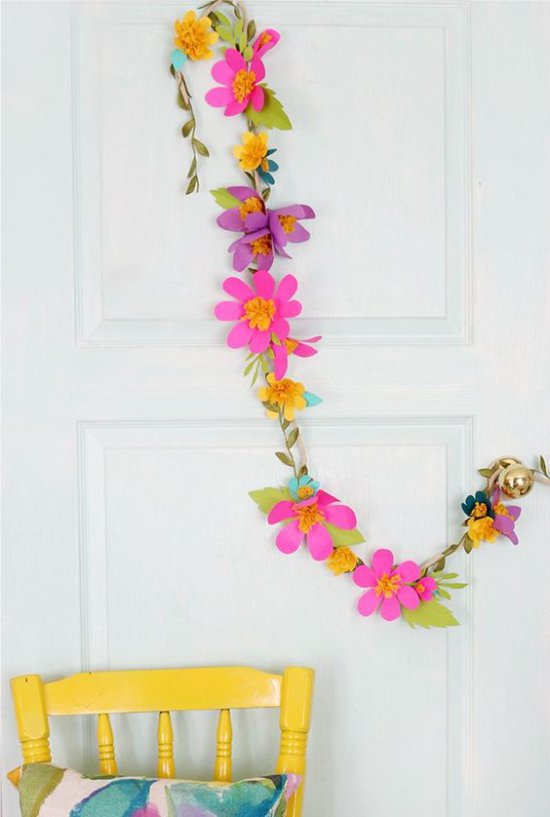
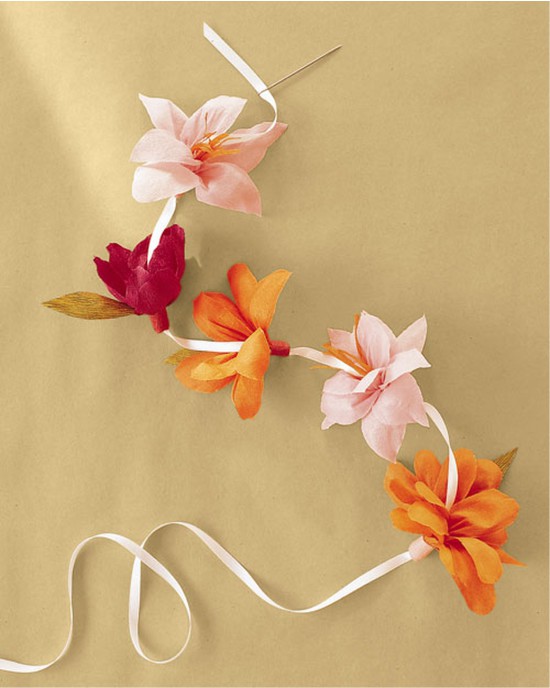
To make such a garland of flowers with your own hands, use ribbon blanks of petals (see MC # 1 below, step 3) and skip the steps of making the stem and pestle
- Take a sheet of cardboard or canvas on a stretcher, glue buds to it and frame it. Voila, the panel is ready! You can hang it on the wall or give it to a friend.

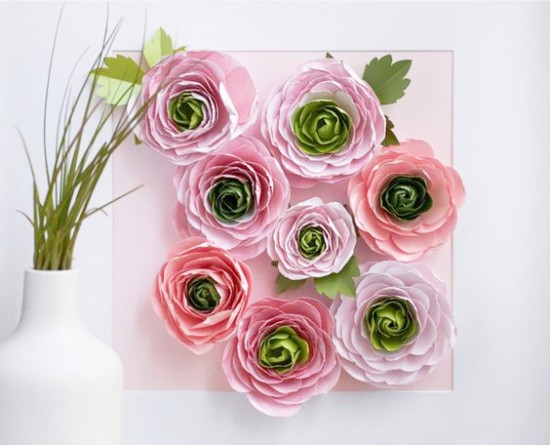
- You can order a beautiful photozone from the masters, but you can select a couple of days and make it yourself, saving considerably. In the second master class there is an instruction on how to make large flowers with your own hands.
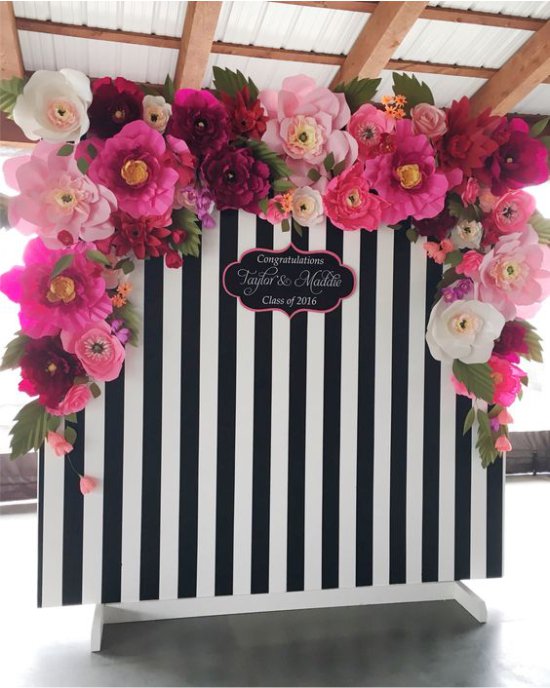
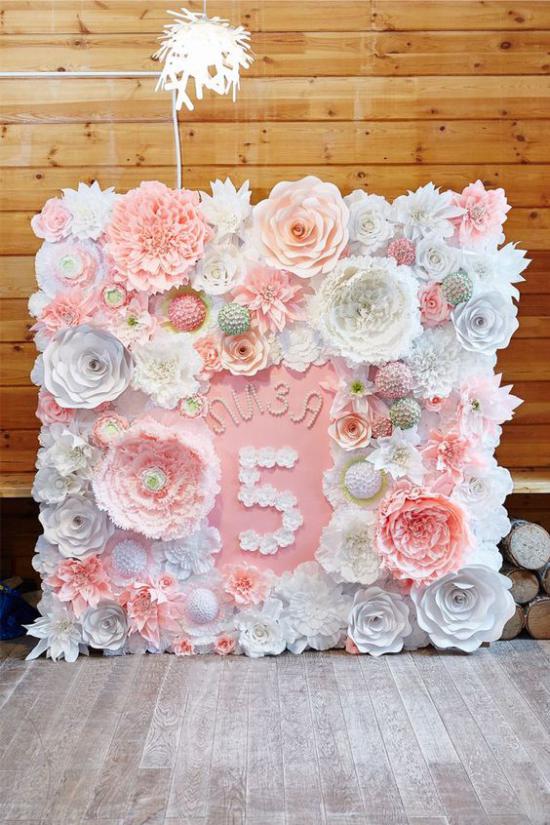
Photozone with flowers for the birthday of the child
- Large flowers of paper can be made for a photo shoot.

- From flowers from corrugated paper, you get luxurious wreaths. They can be used as an attribute for a themed party and, also, for a photo shoot.
- Even the simplest gift wrapping becomes elegant, if you decorate it with homemade paper buds (see master class No. 1 and No. 4). In this collection of photo-examples you can learn a couple of original ideas.
Master class №1 – Flowers from corrugated paper (basic instruction)
Flowers made from corrugated paper, made by own hands, can look surprisingly believable. Although at some stages of their manufacture will have a little tinkering, even the beginner can cope with the craft on the first try.
In this collection of photos are examples of colors from paper, which you can do yourself, following our step-by-step master class.
For work you will need:
- Corrugated paper of the desired shade (for buds);
- Green corrugated paper (for stems, leaves, sepals) and / or ribbon of corrugated paper;
- Floral wire (wire in green winding, sold in shops for creativity, on Alyekspress) or wooden skewer / wire / newspaper tube / spoke;
- Scissors;
- Glue (best hot glue gun);
- Pencil.
Master Class
Although from corrugated paper you can make almost any flowers – from roses to tulips – the principle of their production is approximately the same. The main difficulty is to make the right petals: give them the desired shape, volume, size, choose the color of the paper, guess with the amount.
- Following our master class, you will master the basic skills of making flowers from corrugated paper and be able to make roses, peonies, tulips, lilies, daisies, chrysanthemums and dahlias.
Step 1. So first we need to make a stalk. If you use a flower wire, then just cut it to the desired length: to compose a bouquet is suitable stalk length of about 30 cm, and for, say, the buttonhole is enough and 15 cm.
- If you do not have a special wire, it does not matter. An excellent stem can be made from a wooden skewer, any flexible wire or newspaper folded into a thin tube with a knitting needle / skewer. At the last stage, your impromptu stem should be wrapped with green corrugated paper (we’ll talk about it below).
Step 2. Since pistils and stamens of all colors are different, and sometimes they are not at all, then the technique of making “cores” of artificial flowers exists.
- To make a daisy or a daisy, you need a heart bud in the form of a yellow button. On the stem, knit a cotton ball, then wrap it in a pair of yellow squares cut from corrugated paper, wrap the bottom of the button with green corrugated tape and, finally, fix the tape with glue.
- To make a core for a rose, you need to cut out a 9×9 cm square of colored corrugated paper, fold it into a triangle, then connect the two corners of the triangle to its top. Next, the resulting torch-shaped billet, hold the green corrugated ribbon to the top of the stem and fix it with glue.
The following photo illustrates the blanks for making cores of different colors.
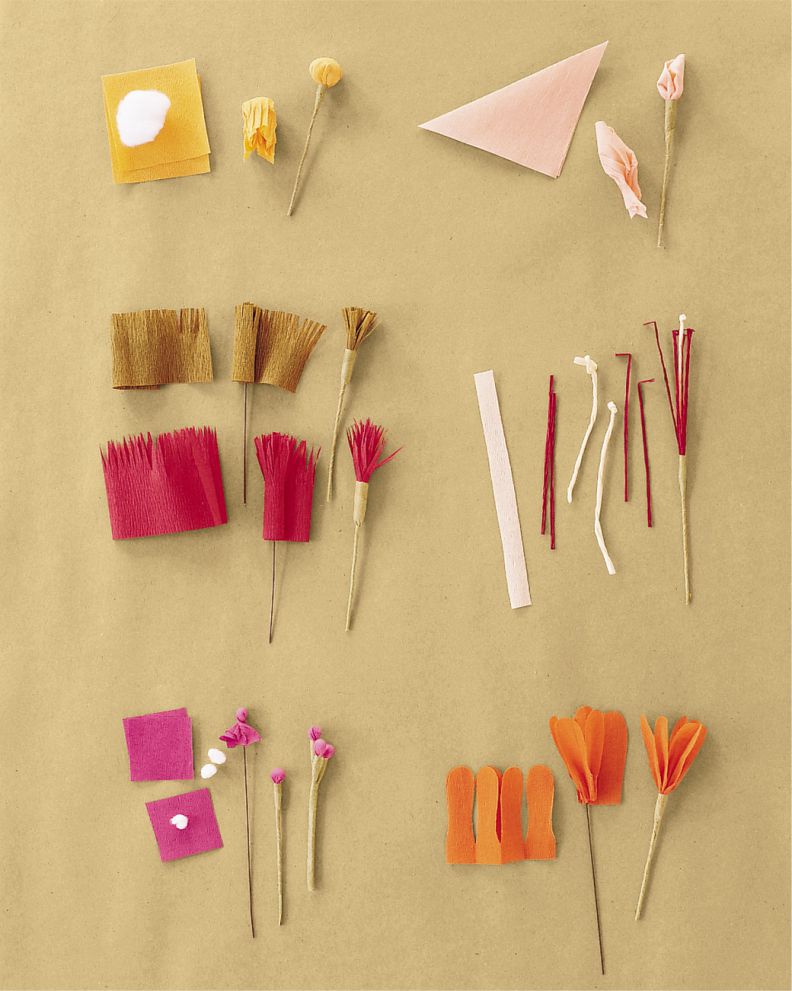
- Want to present a bouquet of flowers as a sweet gift (see photo below)? Use as a core a candy! To do this, just plant it on the top of the stem and fix it with tape / paper tape.
Step 3. We begin to make petals and bud formation. This stage is the most important, therefore it should pay more attention. Depending on which flower you want to make, choose one of two methods of operation.
One-petal method (suitable for roses, peonies, lilies and other flowers with a small number of petals)
As the name suggests, the method consists in forming the bud one by one, the petal behind the petal.
- First of all, a pattern of the desired shape and size is drawn and cut (see templates below).
- Then the corrugated paper is folded several times, a template is applied on it, the outline of the pattern is drawn with a pencil, and then it is cut with scissors. In the end, you will get several blanks at once. Repeat the procedure several times to get the desired number of petals.

These templates will help you navigate in the sizes, shapes and number of petals. Keep in mind that the length of the petals of the rose, peony and tulip should be about 9-11 cm, and lilies – 13.5-15.5 cm
- Next, all the petals need to be given a volume and a bend: a little stretch and bend in / out, if necessary wrap the tips on a toothpick / skewer (eg, for a rose). To understand what kind of shape you need to give the petals, just look at the photo of this flower and experiment a little.
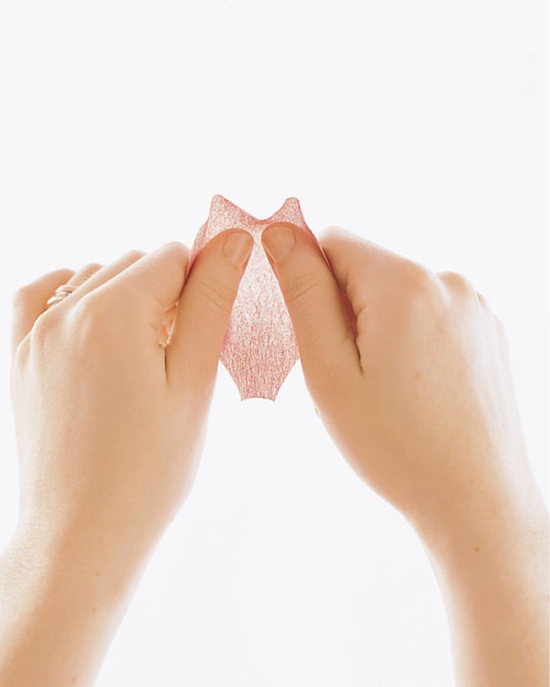
Corrugated paper easily stretches, twists and takes the given form
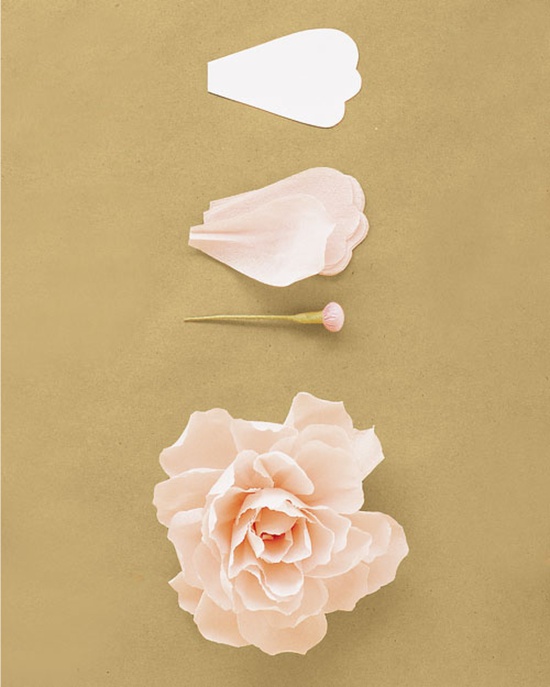
To make a peony, you need to make 35 petals and a stem with a button. How to make petals: focusing on the photo, cut out the petals of the desired shape, then lightly stretch them and bend inward, the base of the petals slightly garnet. Glue the central petals need lower, and the rest – higher. When the flower is ready, just tuck the tips of the petals inside
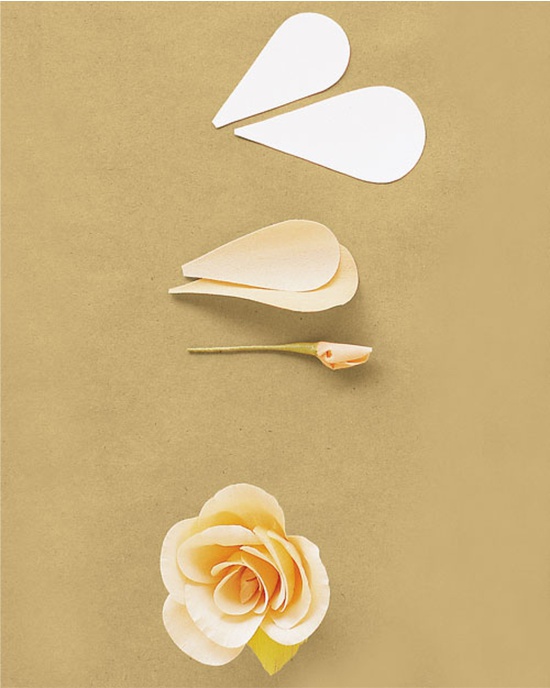
To make a rose, use 5 small and 7 large petals (see the template above). Round the petals just below the middle, and put the top edges on the skewer / toothpick outward. First attach the small petals to the core, and then large ones.
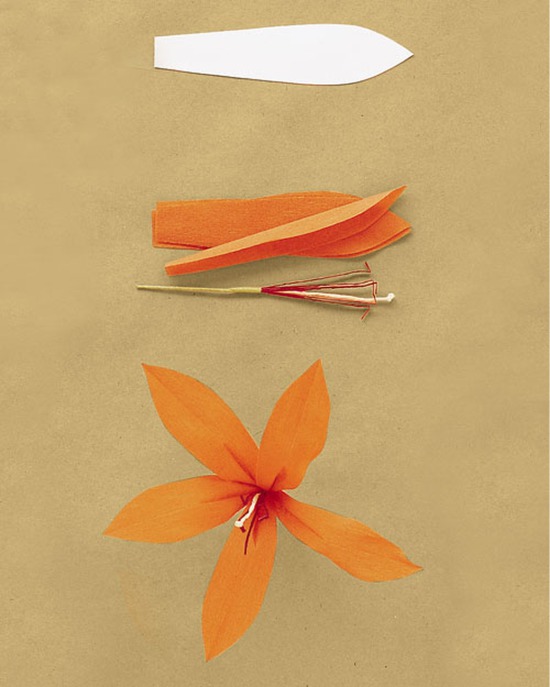
To make a lily, use 5 petals (see the template above) and a pestle with stamens of red and white corrugated paper. Fold the petals in half along to form wrinkles, and then unfold them. Bend the petals, turning them out at the widest point
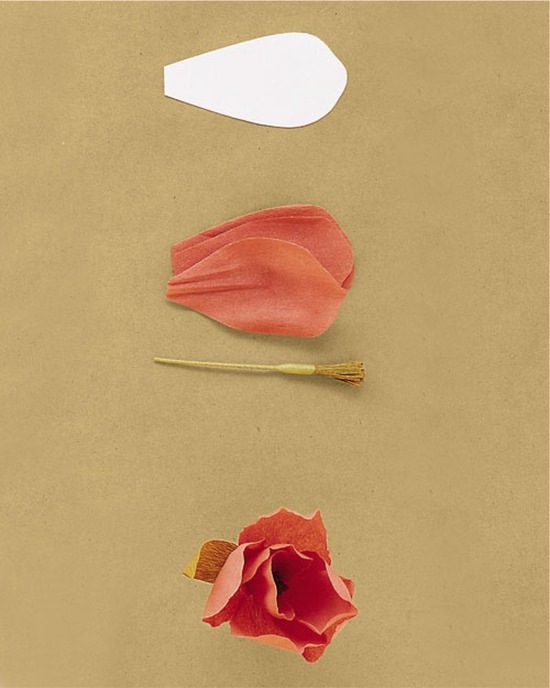
Tulips of corrugated paper are made the easiest. Petals will need only six, they need to be slightly rounded, and the ends to pleat
- When all the petals are ready, start gluing them one at a time to the stem, and then one on the other, adhering to the chess order. The best thing for this purpose is a hot glue gun. If the petals are not too much, then instead of the glue you can use the same green corrugated paper tape (see photo).

Ribbon method (suitable for chamomile, daisies, carnations and other “multilayered” colors)
The difference between this technique lies in the fact that the petals are not cut individually, but from the strip of corrugated paper, when the workpiece becomes like a fringe. In this case, the petals acquire volume and bending (sometimes simultaneously several layers) only after fastening the fringe to the stem.
- Cut out a strip of the desired length and width from the corrugated paper, then fold it into several layers and cut out the petals of the desired shape (see the template below).
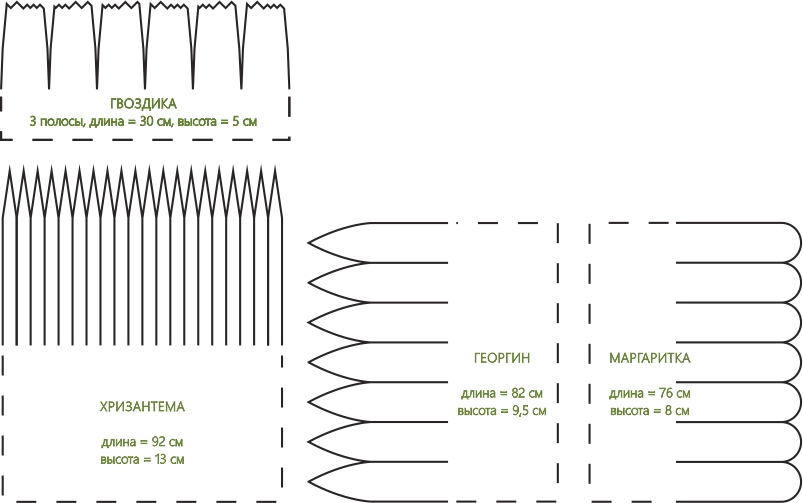
Pattern of ribbon petals for flowers from paper
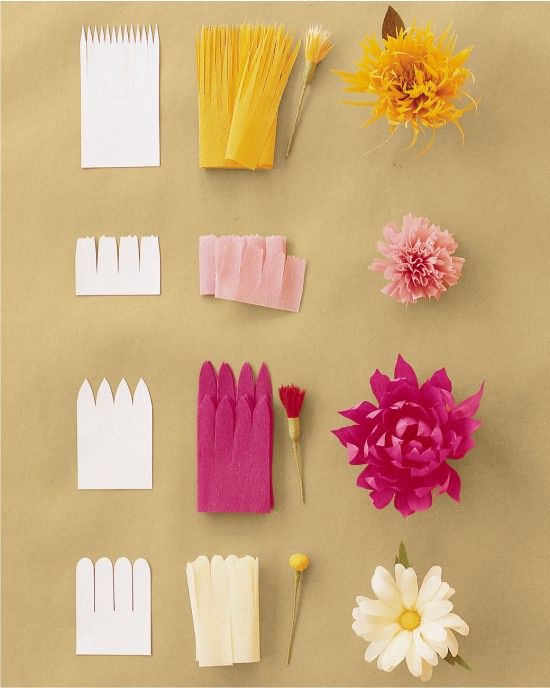
- Tightly wrap the resulting fringe around the pestle and secure it with green corrugated tape, adhesive tape or glue. If there are too many layers, then, so that the bud does not slip out of your hands, the fringe should be cut into several pieces.

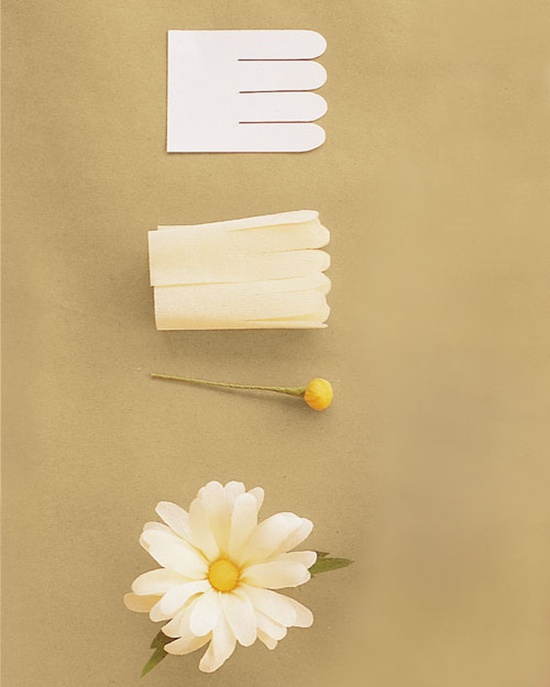

The central petals of the chrysanthemum need to be wrapped around the pistil fairly tightly, the rest – freer and slightly higher

Carnations are made of three strips (see the template). The first strip should be simply compacted into a bundle and fixed with tape / tape. The second and third strip should be wrapped around it, holding and leveling the bottom of the bud. Further, the bud is fixed with corrugated tape or glue. At the end, pull the petals outward to give the carnation a rounded shape
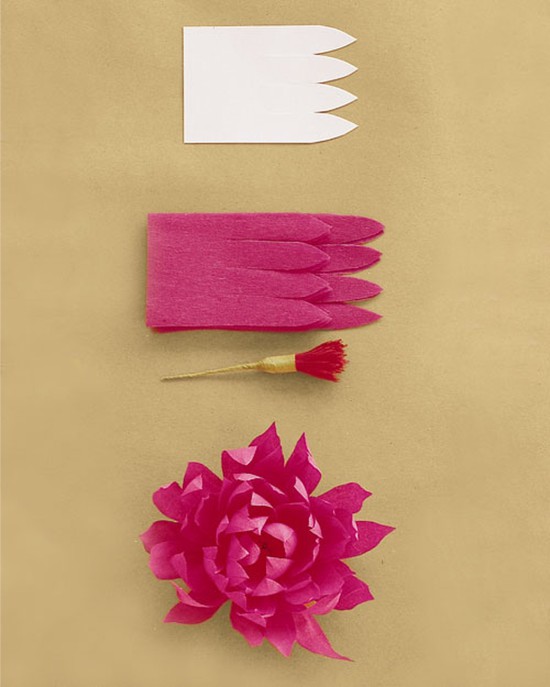
To make a dahlia, start winding the workpiece just below the pistil, but then wind the petals, climbing higher and higher. Give the petals a rounded shape, twist the tips a little, and finally, tighten the tip of each petal to form a crease
- Give the petals a bend, if necessary.

- Now that the flower is almost ready, it must be supplemented with sepals and leaves on the stem. To do this, cut out the blanks of the leaves in the appropriate amount, shape and size (refer to the photos or templates) and just paste in the right places.
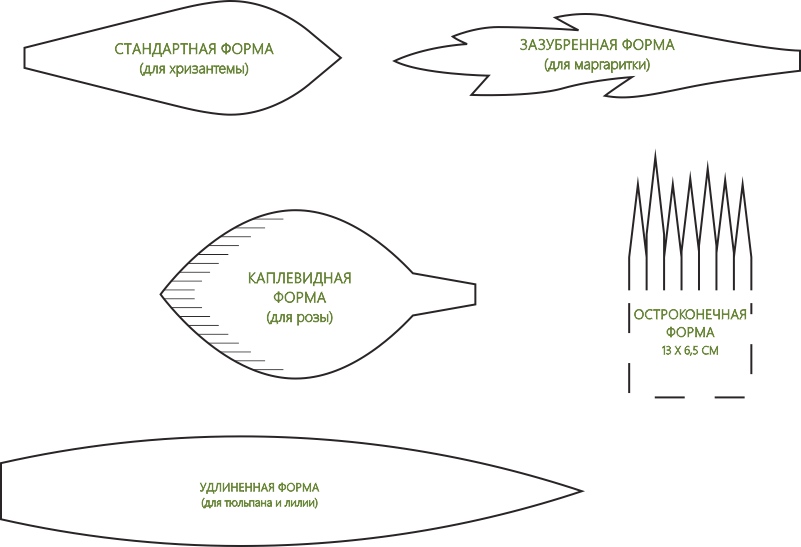
Leaf Pattern
- Sepals are glued under the bud, then they are given a bend and volume.
- To make the leaves for some types of flowers, for example, tulips or lilies, simply cut out the blanks and glue them to the stem. However, some flowers have leaves with cuttings and they need to be done somewhat differently. Cut out the leaves (with a small margin for fastening), then glue them to a small piece of wire, wrap the wire in green paper, then glue the stalk to the stem. If desired, paper leaves can be replaced by artificial ones.
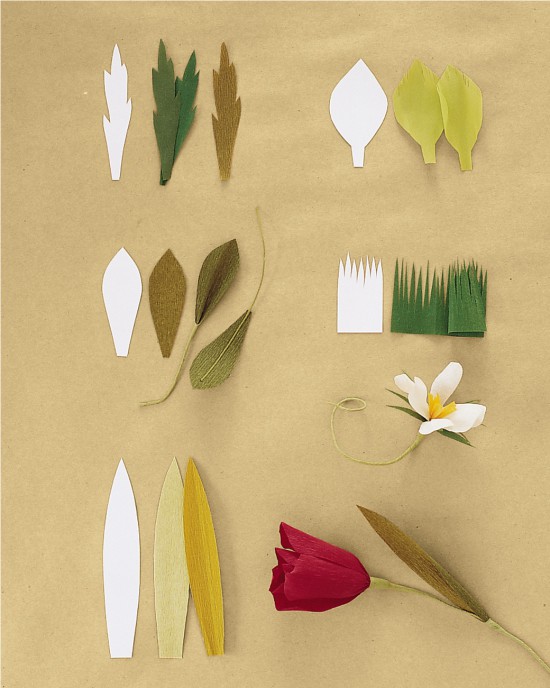
The principle of fastening the leaves to the stem
- Hurray, your corrugated paper flower is almost ready! It remains only to roll the entire stem with a strip / ribbon of green corrugation, starting with sepals and simultaneously wrapping the place of fixing the leaves. At the beginning and end of the stem, the winding should be fixed with glue.
- To flowers made with their own hands, have acquired an even more realistic look and have retained their beauty longer, cover them with melted beeswax and allow to dry.
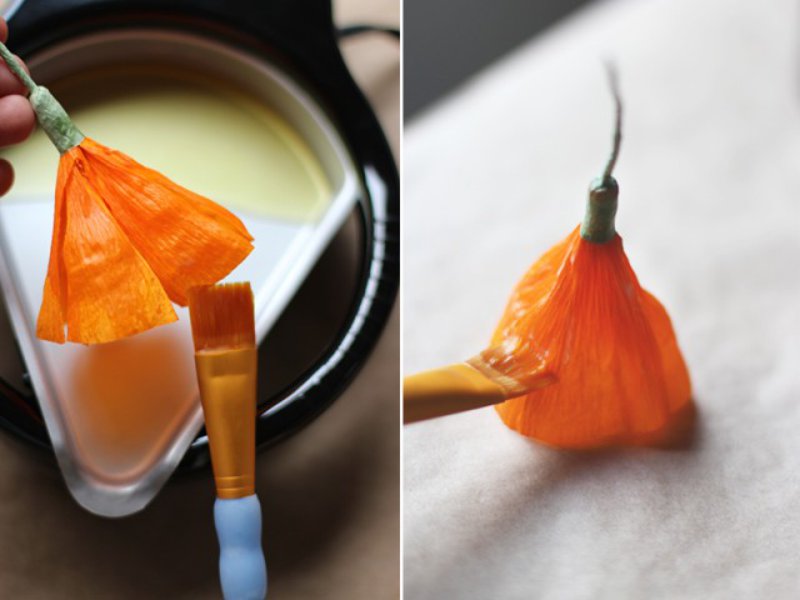
It is better to understand how to make flowers from corrugated paper with your own hands, the next video lesson will help you.
See also the material: How to make flowers from tissue – 4 master classes for beginners.
Master class No. 2 – Large rose made of corrugated paper
Large flowers made by own hands are good for decorating photo zones, ceilings and walls on holidays (for example, at a wedding or birthday). And they can also become an effective props for a photo shoot.

For work you will need:
- A roll of corrugated paper of the desired color 50 × 200 cm (1 roll / 1 flower);
- A roll of corrugated paper is green (for the stem and sepals);
- A4 paper (you can use office paper);
- Hot glue gun;
- Scissors.
How to make big flowers from paper:
Step 1. First we will make a stalk. Take a sheet of white A4 paper, put a pencil on the corner, then roll the paper into the tube.
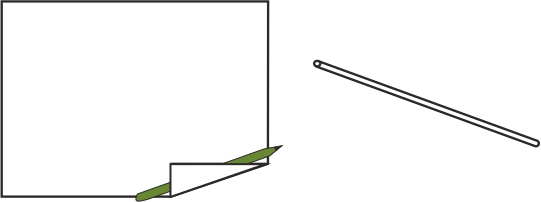
Step 2. Fully expand the roll of corrugated paper. First fold it twice, then double again, then again … did you get a rectangle? Now fold it in half to make a square about 25 × 25 cm.
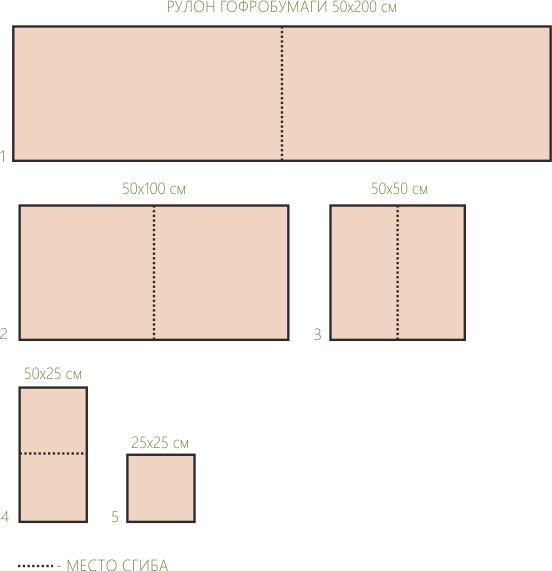
Step 3. Cut the folded paper in all the folds with scissors. You will get two identical stacks of square sheets, from which we will further cut the petals.
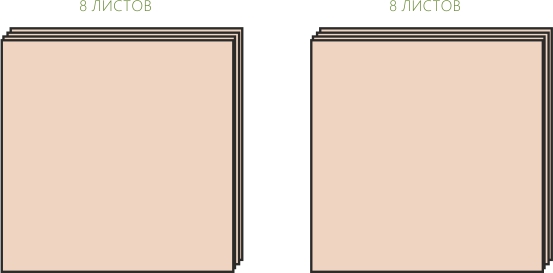
Step. 4. Fold each pile in half. From the first stacked in a rectangle of a pile cut out the form, similar to a half heart, as shown in the diagram below. From the second pile, cut out the same shape, but smaller.
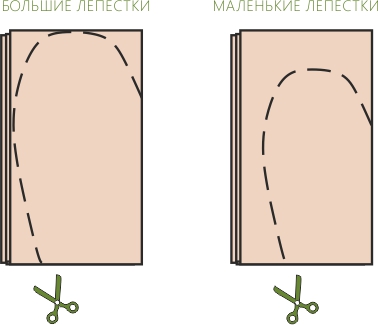
Expand the stack to get these petals.

Step 5. Twist the tips of the petal with a pencil or pen, and the petal itself is slightly stretched and bend inward.
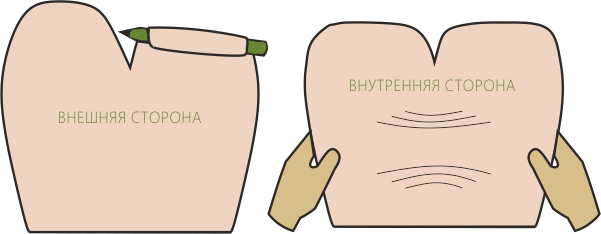
Step 6. Give the petal an even more rounded shape, making two folds in its lower part and fixing them with hot glue.

Step 7. We proceed to bud formation. Fold one of the small petals around the stem tightly enough.
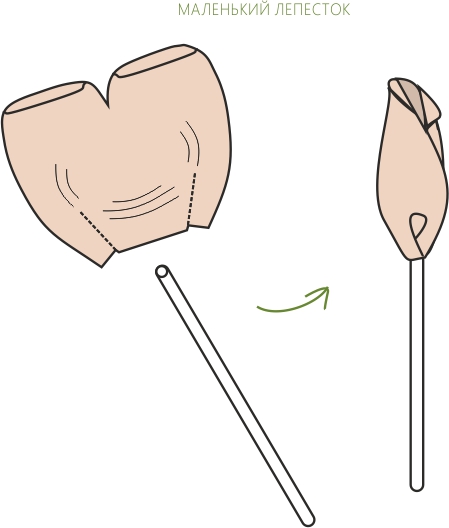
Step 8. Start sticking the other small petals, adhering to the chess order. When the small petals are over, continue to grow the bud with large petals. Totally, your rose will “overgrow” with 15 petals (+1 petal in the center of the bud).
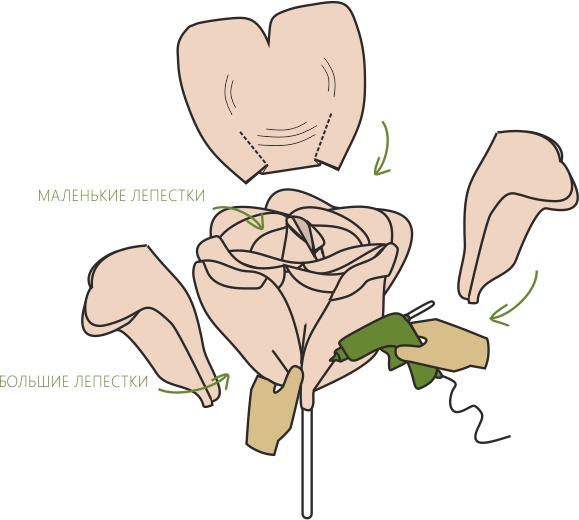
Step 9. The square sheet of green corrugated paper (25 × 25 cm) is folded diagonally to make a triangle, then fold the triangle two more times in half. From the resulting multilayer triangle, starting with the fold line (!), Cut out the shape as in the picture below. When you spread out the cut out piece, you will have a four leaf.

Step 10. Make a small cross-cut in the center of the four-leaf, (see the figure above), through the resulting hole, put it on the stem to the bud, then glue the leaves with hot glue.
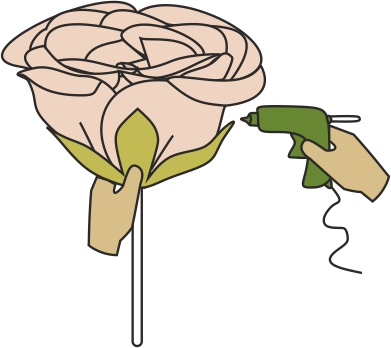
Step 11. Hooray, our big rose is almost ready. It remains only to wrap the stem in green paper. To do this, you need to roll it into a roll, then cut off from it about 2 cm in width (that is, just as if you cut a piece from a roll). Now dissolve the resulting ribbon and wrap it with a stem, fixing the glue upper and lower ends.
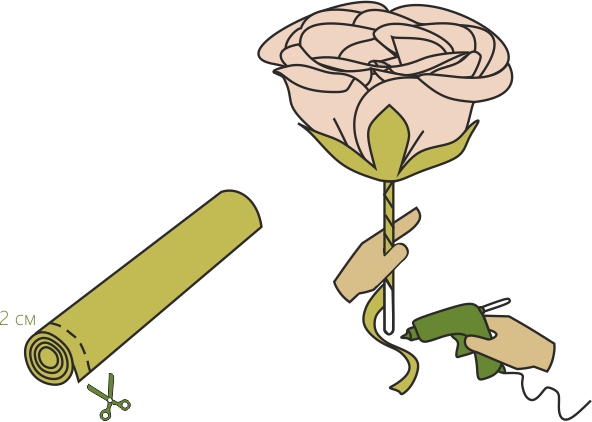
From the next video you will learn how to make great flowers with your own hands from paper to silence.
See also: Flowers from tapes with their own hands – 6 master classes for beginners.
Master Class No. 3 – Hyacinths of colored paper (suitable for children’s creativity)
These hyacinths look as if they were made by an expert quilling technique. In fact, even a child can make such flowers from paper by hand! The production of the first hyacinth will take some time, but for each succeeding flower you will spend no more than 5 minutes.

To make such a bouquet of flowers with your own hands, you need a little more than half an hour
To make flowers from paper you will need:
- Color paper or not too dense cardboard (for buds);
- Green paper (for stems);
- Scissors;
- Ruler;
- Pencil;
- Glue stick;
- Spoke or wooden skewer.
Master Class
Step 1. Cut a strip of approximately 21 × 2.5 cm. If you are using A4 colored paper / cardboard, then you just need to cut the sheet across.

Step 2. Stepping back from the top edge 1 cm, draw a line along the strip with a pencil using a ruler. Next, use the scissors to cut your workpiece into strips about 5-7 mm wide, not reaching the previously drawn line. You will get something like a ribbon with a fringe. Try to cut the paper on smooth and parallel strips, but do not worry about mistakes, because in the folded form they will not be noticeable.
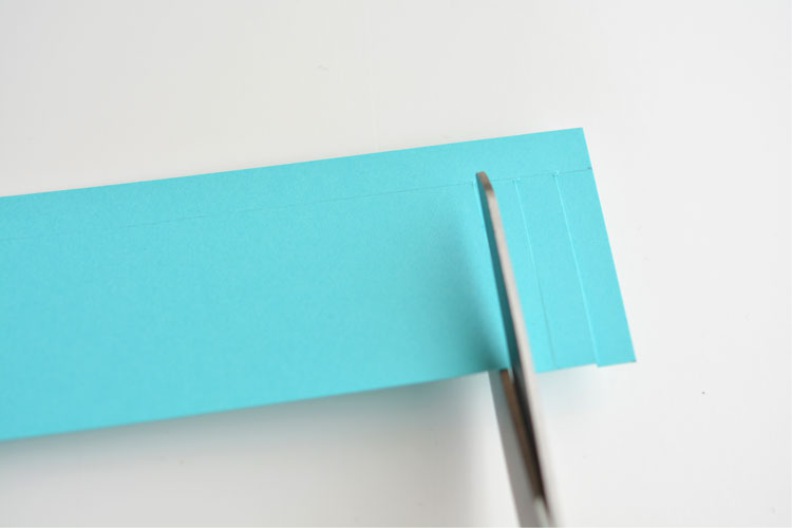
Step 3. Using a knitting needle or a wooden skewer, carefully fold each strip into a roll until it stops. Make sure the pencil line is on the back of the paper.

Step 4. Now let’s deal with the stem. From the green paper (the cardboard does not fit!) Cut out the strip 21 × 2.5 cm.
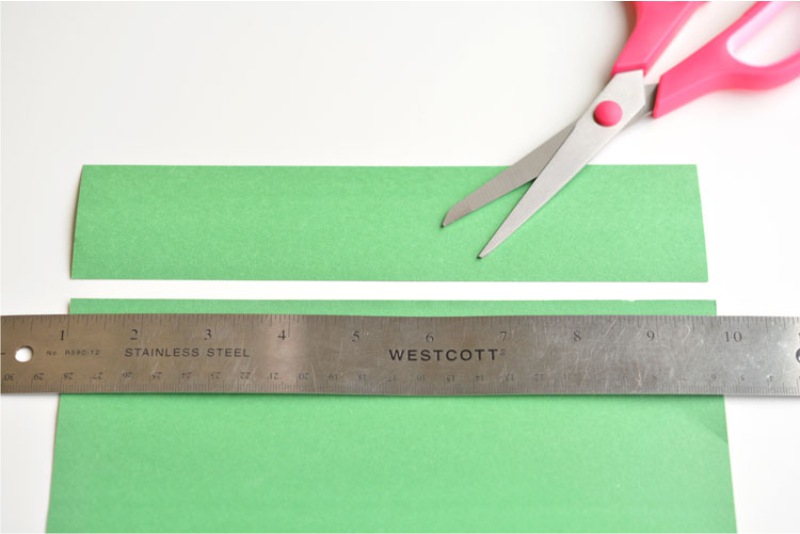
- By the way, if you want to save time, then just use green straws as stems.
Step 5. Tighten one of the corners of your strip diagonally, then walk around the entire strip with glue-pencil (see photo) and, finally, fold the entire strip into a thin tube.
When you’re done, it will look something like this:
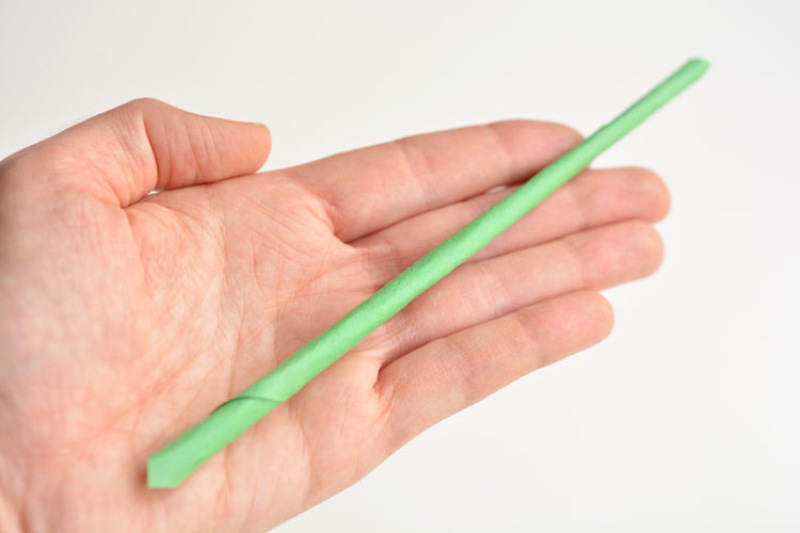
Step 6. It’s time to fold the bud and paste it to the stem. To do this, again take the workpiece bud (strip with curls) and apply glue to its base from the wrong side.
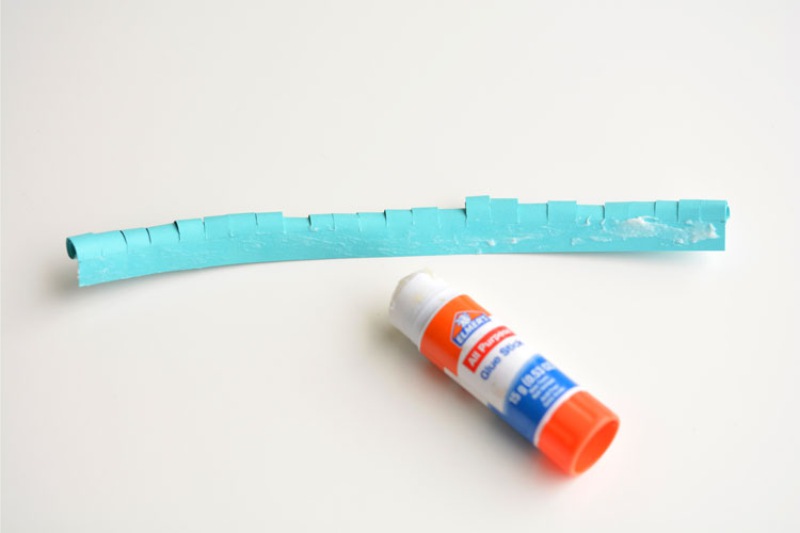
Then start tightly wrap the stem in a strip with curls in a direction from the top down and in a spiral, as shown in the following photos.
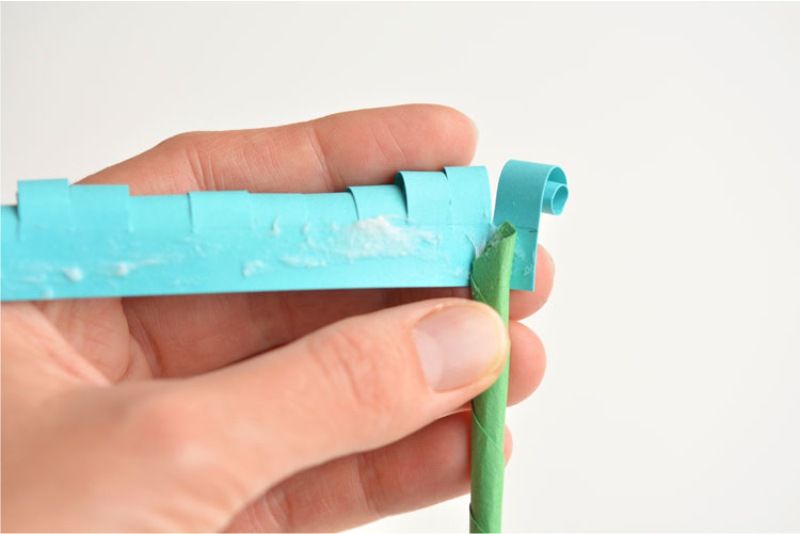
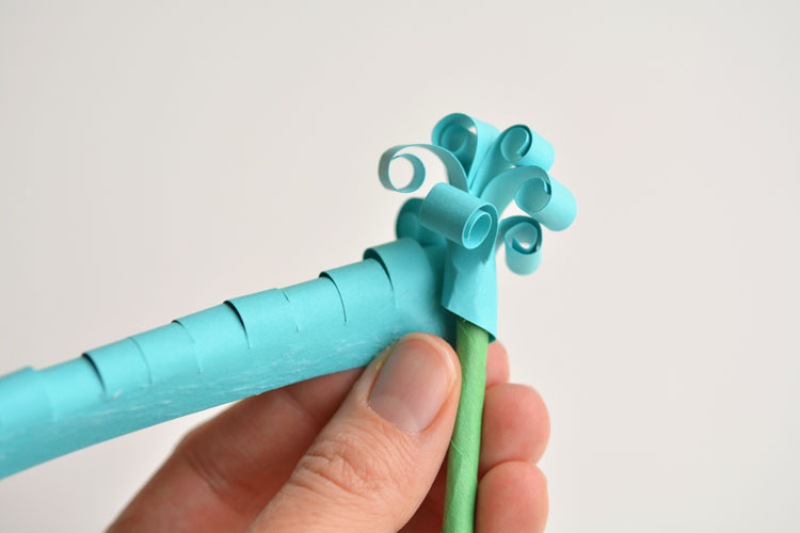
When the bud forms, add the tip of the tip with glue.
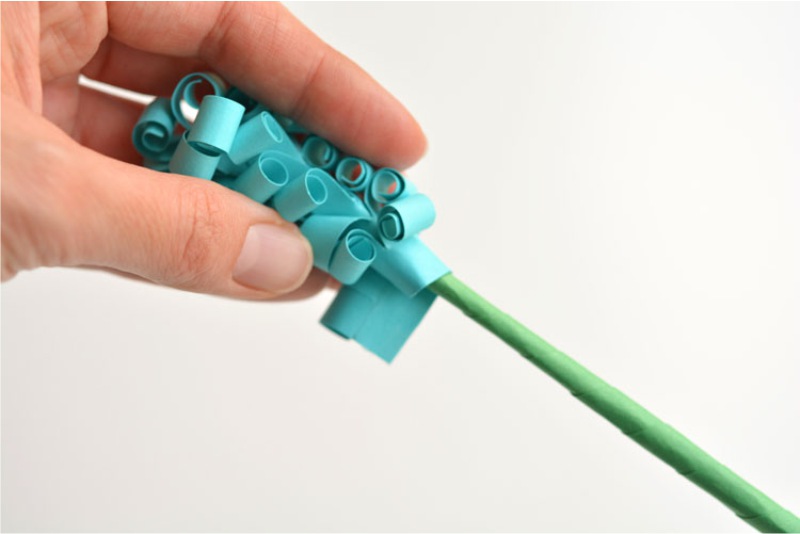
Step 7. Hurray, your first flower of paper is almost ready, it remains only to supplement the stalk with leaves. To do this, cut a piece of approximately 2.5 × 8 cm from the green paper and fold it along the length of an accordion about 1 cm wide.
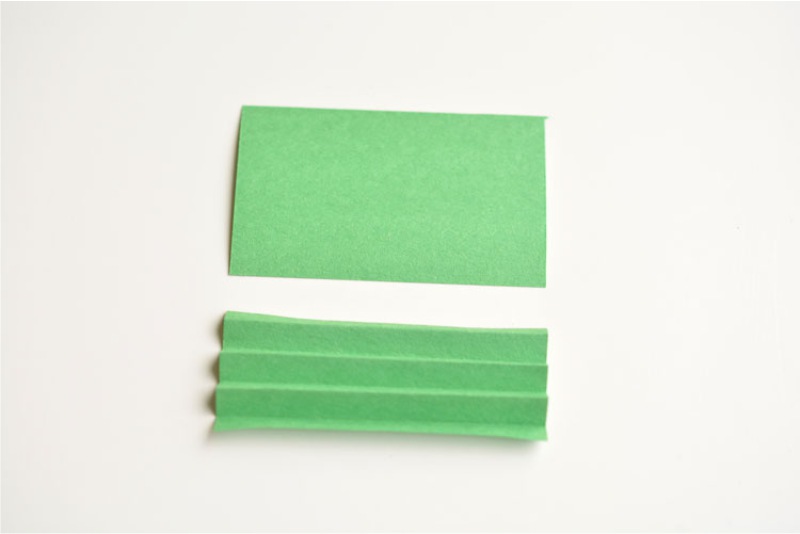
Collect the accordion and, having retreated approximately 1.5 cm from the bottom edge, give it the shape of a leaf with scissors.
In expanded form, your workpiece should have 3-4 leaves and look like in the photo.

Step 8. Grease the bottom of the leaves with glue and place the corner about 5 cm below the bud and at an angle, as shown in the photo below. Then wrap the workpiece tightly around the stem.
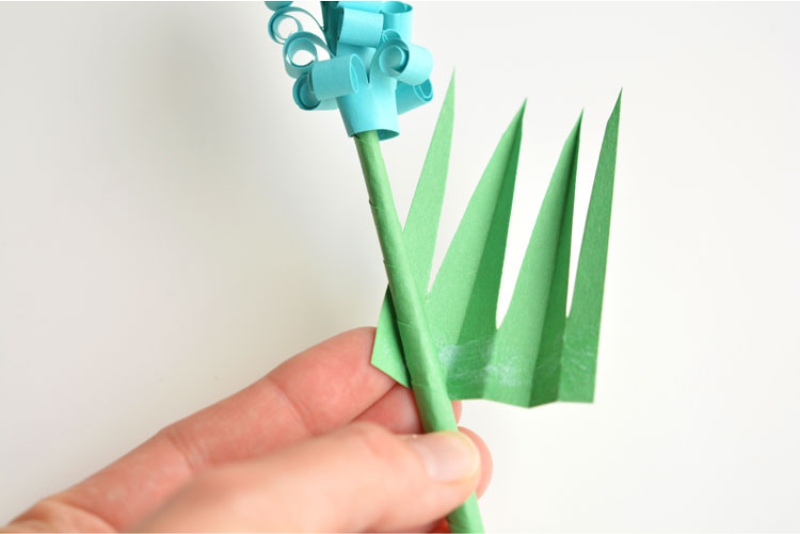
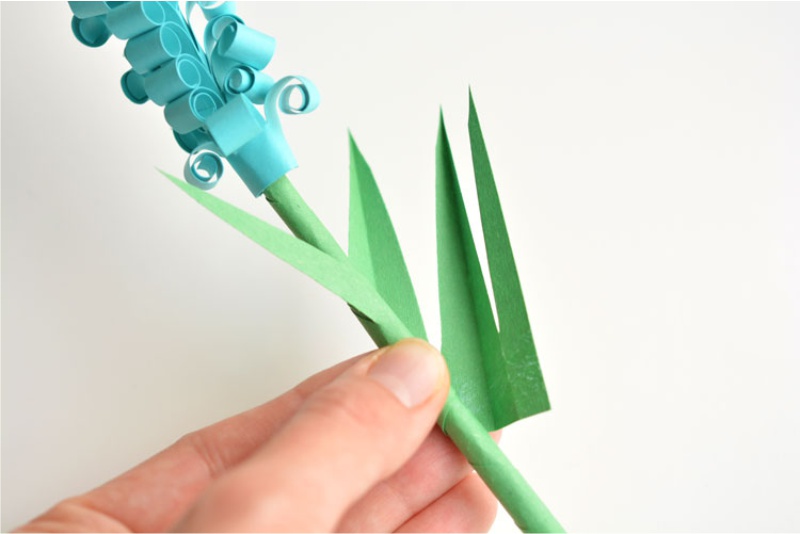
Well, that’s all, hyacinth is ready! Repeat the process using paper of different shades to make a bouquet of paper flowers.

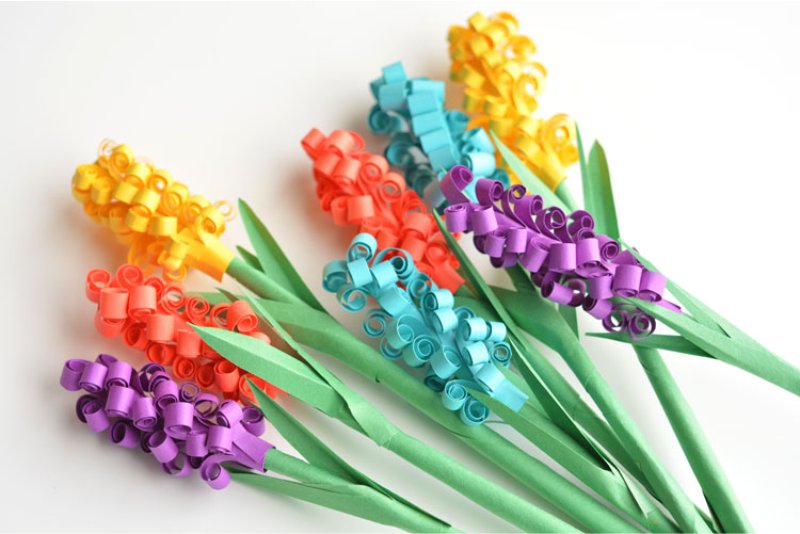
Bouquet of flowers from paper with own hands
Master class № 4 – Roses made of paper (express way)
This master class is useful to you when you need to make flowers yourself super-fast, easy, budget and in large quantities.

For work you will need:
- Any pretty paper (even book pages fit);
- Green paper for leaves;
- Glue (best thermo-adhesive);
- Scissors;
- Pencil.
- Wooden skewers (needed if you want to make a bouquet).
How to make roses from paper:
Step 1. Cut out a square piece of paper about 12 × 12 cm.
Step 2. Draw a circle on your square, and then draw a spiral inside it. It should not be perfect, so that the roses turn out to be invoicing. If you wish, you can even make it wavy, then the rose will have pronounced petals.
Step 3. Cut out your circle, then cut the workpiece along the line of the spiral. In the end, you will get something like a spring.
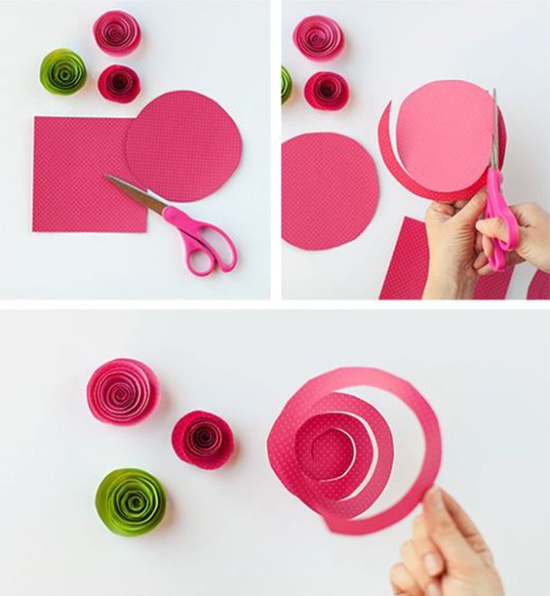
Step 4. Take the outer end of your “spring”, twist it into a roll (loosely), then start to twist the entire tape around it. Hold the flower from below so that the paper does not bloom.
Step 5. When you reach the bottom (inside of the workpiece), glue a bud with enough glue to it. Voila, the first flower is ready!
Step 6. If desired, the rose can be supplemented with leaves. They are cut out in an arbitrary shape and glued.
Step 7. If you want to make a bouquet, then glue buds on skewers or a newspaper / paper tube. It is desirable to wrap the stems in a green paper tape.
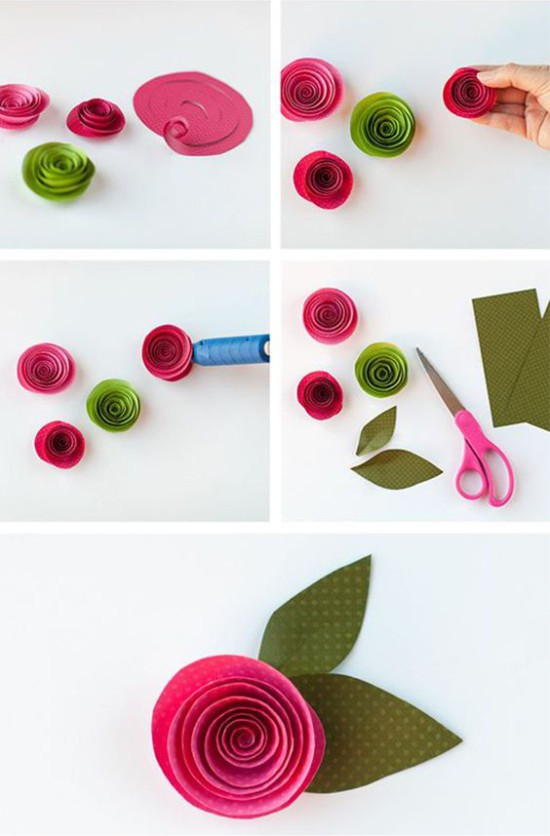
Here are some more ideas for making flowers yourself, which you can realize with the help of our master class.

Wedding garland of colors from colored paper and book pages

